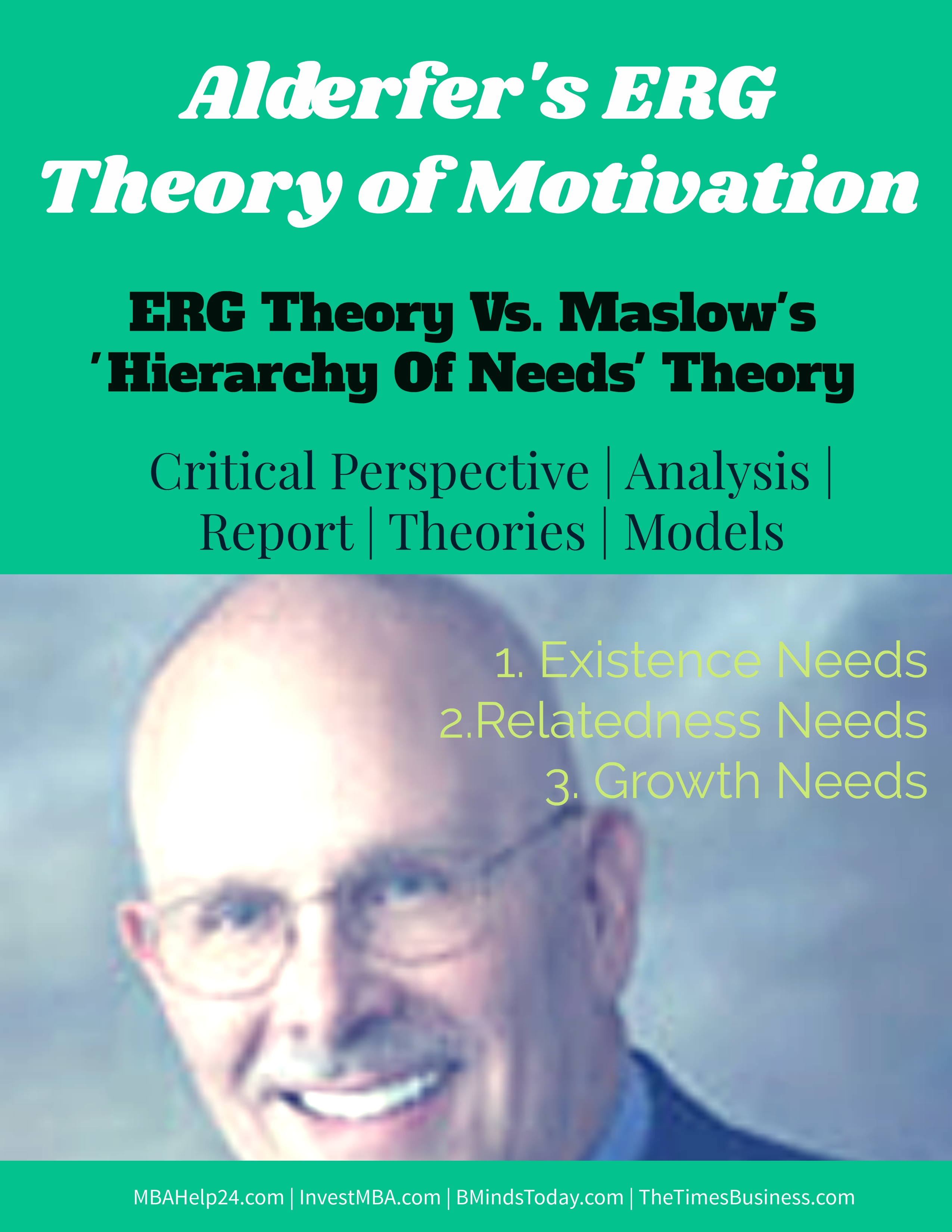You Should Remember
The ERG model and Maslow’s “hierarchy of needs” are comparable for the reason that both are in hierarchical form and assume that individuals move up the hierarchy one stage at a time.

ERG Theory of Motivation
Clayton Alderfer suggested an alteration of Maslow’s “hierarchy of needs” theory in an effort to make simpler and answer back to criticisms of its absence of empirical proof.
Alderfer’s ERG theory recognized three sets of needs:
1 Existence needs: The needs for physical well-being, safety and welfare.
2 Relatedness needs: The needs for satisfactory relationships with others.
3 Growth needs: The requirements that eMphasise the progress of human potential and the aspiration for personal growth and improved capability.
The E. R and G of ERG theory stand for existence, relatedness and growth—the three categories of needs which are the focus of this substitute model of human needs in organisations.
The ERG model and Maslow’s “hierarchy of needs” are comparable for the reason that both are in hierarchical form and assume that individuals move up the hierarchy one stage at a time.
Alderfer argues as Maslow did, that people do have needs that those needs are organized in a hierarchy and that needs are vital determining factor of human behaviour.
Nevertheless, Alderfer minimised the number of need categories and reduced them to three, subsequently suggested that drive up the hierarchy is more complex.
Evaluation of ERG Theory | Advantages | Disadvantages | Validity
Alderfer’s ERG Theory Vs. Maslow’s “Hierarchy of Needs” Theory
The ERG theory is less rigid than Maslow’s “hierarchy of needs” theory, proposing that people may move down as well as up the hierarchy, depending on their aptitude to gratify desires.
“Need hierarchy” model supports describe why organizations discover modes to recognize employees, cheer their contribution in decision-making, and give them opportunities to make substantial contributions to the organization as well as society.
These positions are now front-line managers who are estimated to make decisions and contribute thoughts for enlightening the business.
Nevertheless, the ERG model differs from the Maslow’s need hierarchy theory in three respects.
First, as a replacement for five hierarchies of needs, the ERG theory assumes simply three.
Second, the need hierarchy theory proposes a rigid step-like progression. The ERG theory, in its place, hypothesises that more than one need may be operative at the same period.
To be more precise, Alderfer proposes that there is no presence of a rigid hierarchy where a lower-level need must be significantly satisfied before to move to further stages. An individual can still be working on growth despite the fact that existence or relatedness needs are disappointed or displeased.
Third, Maslow had specified that an individual will stay at a certain level up until that need is fulfilled. The ERG theory counters this by remarking that as soon as a higher-level need is frustrating, the individual’s wish to increase a lower-level need takes place.
Incompetence to fulfil the need for social interaction, for example, might raise the aspiration for more money or for improved working environments.
Therefore, the ERG theory encompasses a frustration-regression dimension. Frustration at a higher-level need can lead to regression to a lower-level need.
Human Resource management: Definitions & Key Knowledge ?
Effective People Management | Motivation | Job Design | Reward Systems
Expectancy Theory | Essentials Of Motivation | Instrumentality | Valance
Job Design | Key Motives | Characteristics of Jobs and People | HR
Collective Approaches to Job Design | Job Enrichment | Job Rotation
Strategic Reward System | Aims | Approaches | policies | Practices
Hierarchy Of Needs Theory | Maslow’s FIVE Needs Systems | Motivation
Impacts & Implication Of Hierarchy Of Needs Theory On HR Management
Advantages, Disadvantages & Limitations Of Maslow ’s ‘Hierarchy of Needs’ Theory
Frederick Herzberg ’s Two-Factor Theory of Motivation | Motivation-Hygiene
Implications, Limitations & Suggestions of TWO-Factor Theory of Motivation
Theory X and Theory Y | McGregor and Leadership | Motivation | HR
The Hard and Soft Approach of Theory X | Key Issues with Theory X
Management Implications of Theory Y | Motivation | leadership
Challenges and Limitations of Theory X and Theory Y | Motivation


































































































